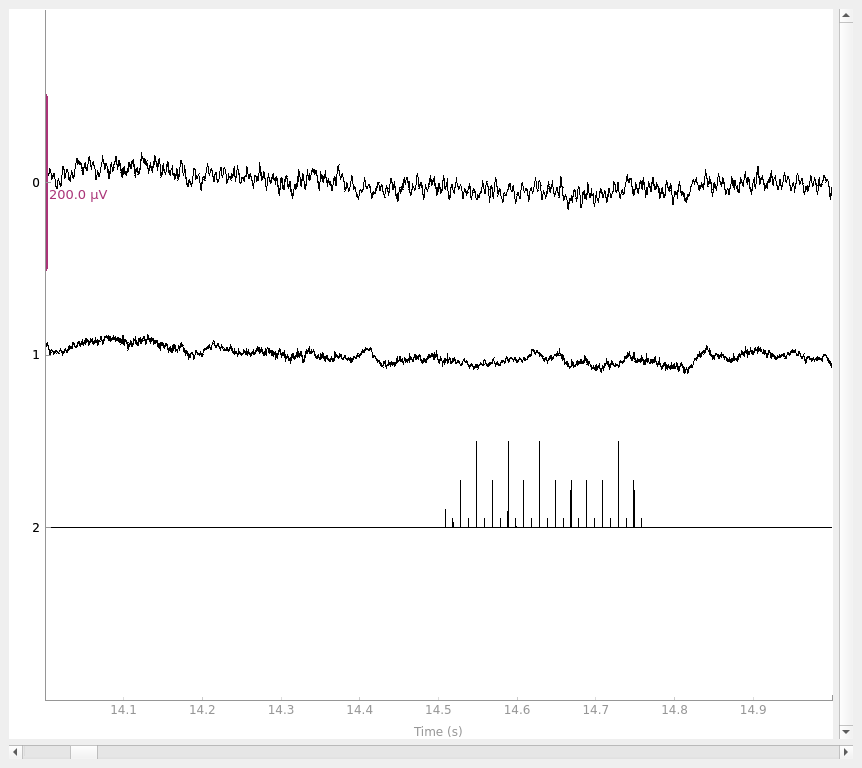Note
Go to the end to download the full example code
Reading XDF EEG data#
Here we read some sample XDF data. Although we do not analyze it here, this recording is of a short parallel auditory response (pABR) experiment [1] and was provided by the Maddox Lab.
# Authors: Clemens Brunner <clemens.brunner@gmail.com>
# Eric Larson <larson.eric.d@gmail.com>
#
# License: BSD-3-Clause
import pyxdf
import mne
from mne.datasets import misc
fname = (
misc.data_path() / 'xdf' /
'sub-P001_ses-S004_task-Default_run-001_eeg_a2.xdf')
streams, header = pyxdf.load_xdf(fname)
data = streams[0]["time_series"].T
assert data.shape[0] == 5 # four raw EEG plus one stim channel
data[:4:2] -= data[1:4:2] # subtract (rereference) to get two bipolar EEG
data = data[::2] # subselect
data[:2] *= (1e-6 / 50 / 2) # uV -> V and preamp gain
sfreq = float(streams[0]["info"]["nominal_srate"][0])
info = mne.create_info(3, sfreq, ["eeg", "eeg", "stim"])
raw = mne.io.RawArray(data, info)
raw.plot(scalings=dict(eeg=100e-6), duration=1, start=14)

Creating RawArray with float64 data, n_channels=3, n_times=2320128
Range : 0 ... 2320127 = 0.000 ... 232.013 secs
Ready.
References#
Total running time of the script: ( 0 minutes 6.896 seconds)
Estimated memory usage: 101 MB